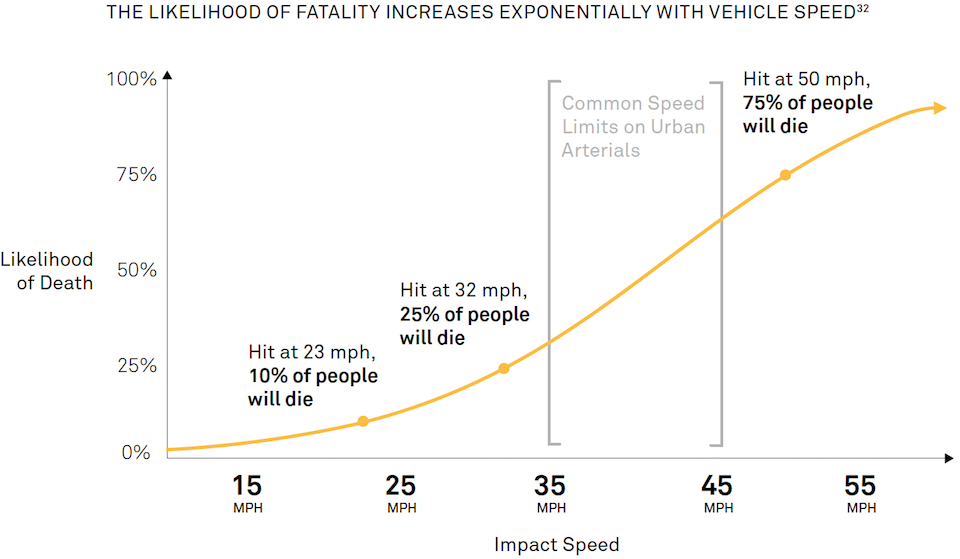Speed is a central factor in traffic deaths. The National Highway Traffic Safety Administration reports that speed was a factor in a quarter of all fatal crashes in 2018. As speed limits and speeds increase, so do fatalities. Researchers from the Insurance Institute for Highway Safety (IIHS) found that a 5 mph increase in the maximum speed limit was associated with an 8% increase in the fatality rate on interstates and freeways, and a 3% increase in fatalities on other roads.
Vehicle speed at the time of impact is directly correlated to whether a person will live or die. A person hit by a car traveling at 35 miles per hour is five times more likely to die than a person hit by a car traveling at 20 miles per hour. The risk of death at every speed is higher for older pedestrians and pedestrians hit by trucks and other large vehicles.
High speed crashes are more likely to occur than crashes at lower speeds and, when they do occur, they’re more likely to be deadly.
Higher speeds are more likely to result in crashes because the amount of time a driver has to hit the brakes or swerve decreases at higher speeds, while vehicle braking distances increase. A driver going 40 mph travels twice as far as a driver traveling at 25 mph before coming to a complete stop. Research also shows that drivers have less peripheral awareness at higher speeds and are less likely to see or predict potential conflicts such as people crossing the street or children playing. Meanwhile, crashes are more likely to be fatal at higher speeds because these crashes are more forceful.
As a result, evidence shows that small reductions in speed result in large safety gains. The Highway Safety Manual reports that a 1 mph reduction in operating speeds can result in a 17% decrease in fatal crashes. A separate study found that a 10% reduction in the average speed resulted in 19% fewer injury crashes, 27% fewer severe crashes, and 34% fewer fatal crashes.
